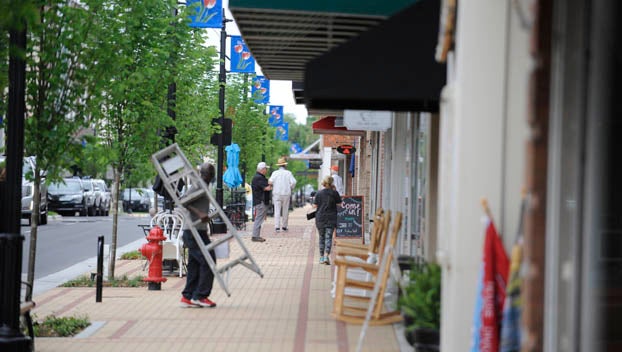Unpublished play about North Carolina massacre rediscovered
Published 2:40 pm Tuesday, June 23, 2020
|
Getting your Trinity Audio player ready...
|
By BEN STEELMAN
The StarNews
WILMINGTON — The author of “A Raisin in the Sun” spent the last years of her life writing a play about Wilmington’s political coup and racial violence in 1898.
That play was still unfinished in 1965 when Lorraine Hansberry died of pancreatic cancer at the age of 34. Hansberry, however, left behind more than 300 pages of drafts on the drama, tentatively titled “Marrow.” Scholars are now rediscovering the manuscript, and hopes are rising in academia that it might eventually see print.
In a June 3 piece in The New York Times, Daniel Pollack-Pelzner reported how Stephanie Browner of New York’s New School spent more than a year sorting through the drafts for “Marrow,” now housed in the New York Public Library’s Schomburg Center.
It’s unclear if Hansberry, a Chicago native who studied at the University of Wisconsin-Madison and lived most of her adult life in New York, ever passed through Wilmington. Her inspiration, however, was “The Marrow of Tradition,” a 1901 novel by the African-American author Charles Waddell Chesnutt (1858-1932).
Born in Ohio, Chesnutt grew up in Fayetteville, where he worked as assistant principal at a normal school. He knew Wilmington well, had friends in the community and traveled to the Port City to research his novel. Set in the fictional Southern town of “Wellington,” “The Marrow of Tradition” is a lightly camouflaged fictional treatment of events in Wilmington on and before Nov. 10, 1898, when a white mob burned a black-owned newspaper and forced the city’s elected, biracial slate of officials to resign, replacing them with white supremacist Democrats.
Chesnutt’s novel was long out of print when Hansberry rediscovered it, and the drafts show she was working on an adaptation as early as 1955, two years before “A Raisin in the Sun” was completed.
In March 1959, a few weeks after “Raisin” opened on Broadway, according to the New York Times piece, Hansberry told a reporter for The New York Post that she was working on an adaptation of “The Marrow of Tradition.”
“If I finish, it won’t be Chesnutt at all, just me,” she said.
The drafts show that Hansberry made critical changes in Chesnutt’s story, such as introducing the character of a madwoman whose husband had been murdered by the Ku Klux Klan decades earlier. Hansberry had also talked about introducing Chesnutt himself as a character, perhaps as a narrator or commentator, in a dialogue about how to respond to white violence.
Hansberry’s ex-husband and executor, Robert Nemiroff, had assembled other plays after the playwright’s death, but not “Marrow.” Soyica Colbert of George Washington University, author of an upcoming biography of Hansberry, speculated in the Times that Nemiroff may have decided that “Marrow” was too radical for its time, particularly after another Hansberry project — a script for a television play about slavery, titled “The Drinking Gourd” — was shelved by NBC.
“A Raisin in the Sun,” loosely inspired by the efforts of Hansberry’s family’s effort to move into an all-white subdivision, was the first play by an African-American woman to be produced on Broadway. The New York Drama Critics’ Circle named it the best play of 1959, and it was nominated for four Tony Awards, including cast member Sidney Poitier for best actor in a play. New York Times drama critic Frank Rich said Hansberry’s play “changed American theater forever.”
Several scholars told Pollack-Pelzner that “Marrow” is important since it offered a darker vision of American race relations and violence than the relatively optimistic “Raisin.”
Although it might take years, some scholars raised the possibility of an edited version of “Marrow” being published or staged. Joi Gresham, executor of the Hansberry estate, expressed interest in reviving some of Hansberry’s unproduced works.
“My perspective is that we should take what she’s done, even if she didn’t deem it finished,” Imani Perry, a Princeton University professor and Hansberry biographer, told the Times. “She was so prolific. There’s a lot that doesn’t have the final period put on it.”
The rediscovery of “Marrow” comes during a wave of new material on Wilmington in 1898. Earlier this year, New York Times contributor David Zucchino published “Wilmington’s Lie,” a re-examination of the violence and its aftermath.
Roots musician and MacArthur grant recipient Rhiannon Giddens has been working on a musical about the events of 1898 in collaboration with Wilmington-based writer John Jeremiah Sullivan. And Wilmington native Lauren Collins, a staff writer with The New Yorker and author of “When in French: Love in a Second Language,” has announced plans for her own book on the subject.



